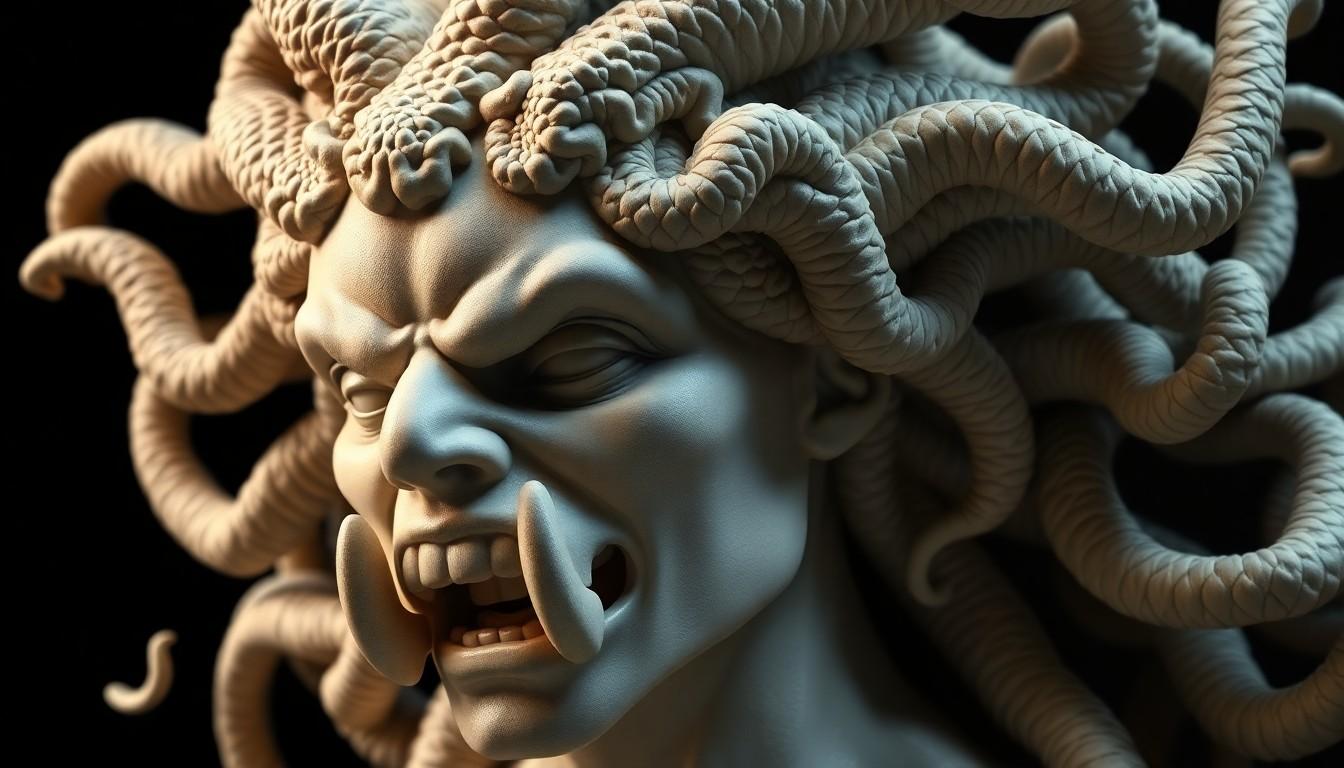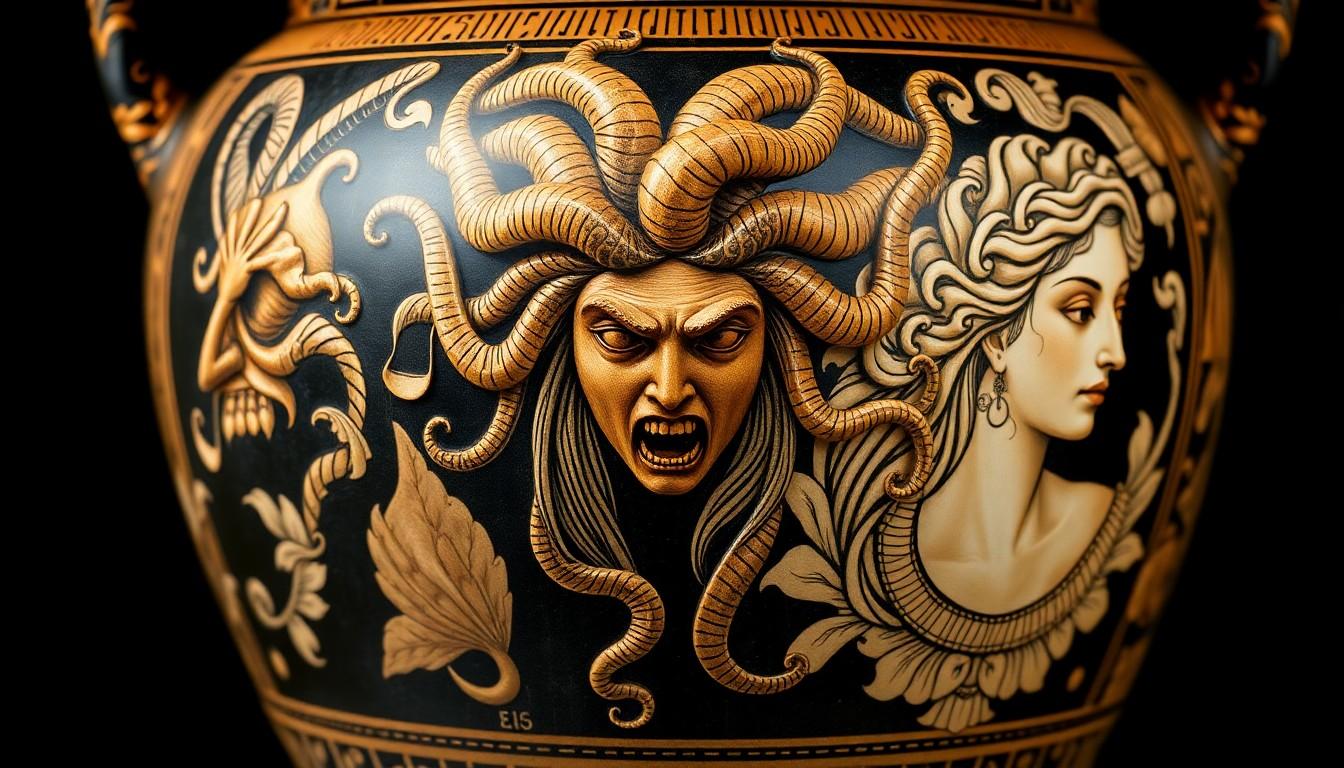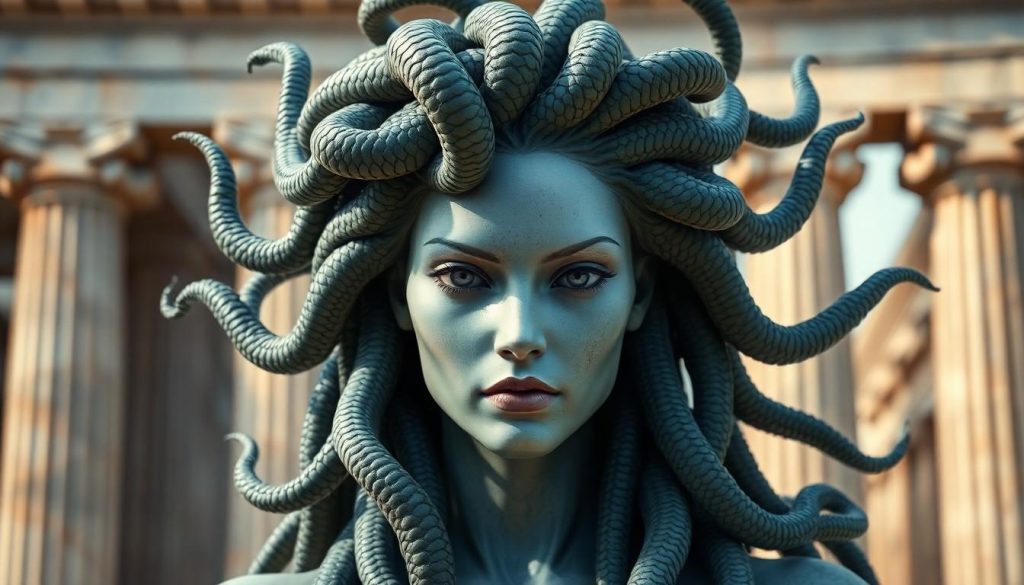The mythological tale of Medusa has captivated audiences for centuries with its haunting narrative of a beautiful maiden transformed into a snake-haired monster. While most people know her as the Gorgon whose gaze could turn mortals to stone, modern historians and archaeologists have long wondered about Medusa’s actual appearance.
Recent scientific studies and historical discoveries have sparked renewed interest in uncovering Medusa’s real face. Ancient Greek artifacts, artworks, and literary descriptions provide tantalizing clues about her physical features before and after Athena’s curse. From classical sculptures to hidden temple reliefs, these historical pieces help piece together a more accurate representation of this iconic figure’s appearance.
The Ancient Greek Myth of Medusa
Ancient Greek mythology portrays Medusa as one of three Gorgon sisters, born to the sea deities Phorcys and Ceto. Among her sisters, Euryale and Stheno, Medusa was the only mortal Gorgon.
Original Beauty
Medusa’s initial appearance featured striking beauty, particularly noted in Ovid’s “Metamorphoses.” Her most remarkable feature was her lustrous hair, which caught the attention of Poseidon, the god of the sea. Unlike the monstrous depiction that later emerged, Medusa’s original form exemplified the ideals of Greek feminine beauty.
The Curse of Athena
The transformation of Medusa occurred in Athena’s temple after an encounter with Poseidon. The location of this event proved crucial, as temples were sacred spaces dedicated to specific deities. Athena’s response to this violation of her holy space manifested in two distinct curses:
- Hair Transformation
- Conversion of beautiful locks into writhing snakes
- Each strand became a living serpent
- Complete alteration of her head’s appearance
- Petrifying Gaze
- Eyes gained the power to turn viewers to stone
- Direct eye contact resulted in instant petrification
- Permanent curse with no known remedy
| Original Features | Transformed Features |
|---|---|
| Beautiful hair | Snake-covered head |
| Normal gaze | Petrifying stare |
| Mortal form | Monstrous appearance |
This transformation established Medusa as one of mythology’s most recognizable figures, cementing her position in ancient Greek lore as a powerful symbol of divine punishment. Her altered form represented a complete reversal of her initial beauty, creating a being whose sight proved fatal to mortals.
Origins of Medusa’s Appearance in Classical Art

Classical art depicts Medusa’s transformation from a beautiful maiden to a monstrous Gorgon through distinct artistic elements across different periods.
Early Greek Depictions
Ancient Greek artists portrayed Medusa with specific grotesque features:
- A broad circular face with exaggerated features
- Snake-like hair writhing around her head
- Prominent tusks or fangs protruding from an open mouth
- A protruding tongue is emphasized in sculptures
- A beard, reflecting early Greek associations of monstrosity
Roman Interpretations
Roman artists modified Medusa’s appearance to reflect their cultural aesthetics:
- More feminine facial features compared to Greek versions
- Refined snake-hair arrangements with artistic symmetry
- Reduced emphasis on grotesque elements
- Integration of wings in some depictions
- Preservation of the petrifying gaze concept through wide-open eyes
Scientific Analysis of Medusa’s Face

Scientific investigations into Medusa’s appearance focus primarily on archaeological evidence from ancient Greek artifacts alongside historical descriptions from classical literature. Modern researchers examine these sources to understand how the iconic features of Medusa evolved through different historical periods.
Facial Reconstruction Studies
Archaeological examinations of ancient Greek sculptures reveal distinct patterns in Medusa’s facial representations. Early Archaic period artifacts (700-480 BCE) display the following characteristics:
- Circular face structure with exaggerated width
- Prominent bulging eyes positioned symmetrically
- Flared nostrils carved with emphasized detail
- Open mouth featuring exposed teeth or tusks
- Angular jaw structure with masculine features
Classical period (480-323 BCE) artifacts demonstrate modified features:
- Oval facial structure with feminine proportions
- Refined facial features with smoother contours
- Balanced facial symmetry in sculptural works
- Defined cheekbones with elegant modeling
- Serene expression replacing grotesque elements
Medical Theories Behind the Snake Hair
The snake-hair representation in ancient artwork presents specific anatomical characteristics:
- Cylindrical protrusions emerging from the scalp
- Serpentine forms with distinct scaling patterns
- Directional movement suggesting living organisms
- Systematic arrangement around the head
- Integration with natural hair patterns
- Coiled arrangements resembling braided hair
- Individual snakes with detailed head structures
- Varying lengths create dynamic compositions
- Synchronized movement patterns in relief carvings
- Anatomically accurate snake representations
Historical Artifacts Depicting Medusa

Ancient Greek artifacts prove Medusa’s evolving image throughout classical history. These depictions range from monstrous early portrayals to increasingly humanized representations in later periods.
Famous Greek Pottery
Greek pottery reveals Medusa’s transformation from a grotesque monster to a beautiful woman. Early vase paintings display her with exaggerated features: a circular face, protruding fangs, wings, and wild snake hair. Later pottery pieces, such as those by artist Polygnotus, present a more feminine Medusa with refined features and peaceful expressions, particularly in scenes depicting Perseus’s beheading of the sleeping Gorgon.
Ancient Temple Carvings
The Gorgoneion, Medusa’s severed head, appears prominently in temple architecture as an apotropaic symbol. These stone carvings feature:
- Circular face designs with radiating snake hair
- Prominent fangs carved into grimacing expressions
- Wing-like elements framing the face
- Deeply carved eyes emphasizing her petrifying gaze
Temple artists positioned these Medusa carvings at entrances or central points to ward off evil spirits. The architectural placement demonstrates the dual nature of Medusa’s image as both a protective symbol and a fearsome monster in ancient Greek culture.
Modern Reimagining of Medusa’s Face
Modern interpretations of Medusa’s face blend historical accuracy with contemporary artistic techniques. This evolution reflects changing cultural perspectives while maintaining critical elements from classical depictions.
Contemporary Artistic Interpretations
Contemporary artists reimagine Medusa’s face through digital art, sculpture, and mixed-media installations. These modern works often:
- Emphasize feminine features while retaining the snake-hair motif
- Incorporate elements of beauty alongside traditional fearsome aspects
- Present a more nuanced portrayal that explores themes of power transformation
- Create hybrid interpretations merging Classical Greek elements with modern aesthetics
Digital Reconstructions
Digital technology enables detailed reconstructions of Medusa’s face based on ancient artifacts and archaeological evidence. These reconstructions:
- Utilize 3D modeling software to recreate facial features from classical descriptions
- Combine historical references from Archaic Greek art with modern anatomical understanding
- Map the placement pattern of snake hair based on architectural remnants and temporal artifacts
- Generate multiple variations showing the evolution from early grotesque forms to later refined depictions
Takeaway
The myth of Medusa continues to captivate audiences through its complex portrayal of beauty, power, and divine punishment. From ancient Greek pottery to modern digital reconstructions, her image has evolved significantly while maintaining its profound cultural impact.
Today’s understanding of Medusa’s real face combines archaeological evidence, historical artifacts, and artistic interpretations spanning multiple civilizations. Her transformation from a beautiful maiden to a fearsome Gorgon remains one of mythology’s most enduring and thought-provoking tales.
The ongoing fascination with Medusa’s appearance demonstrates how this legendary figure transcends time, connecting ancient Greek mythology to contemporary artistic expression and scientific inquiry.

